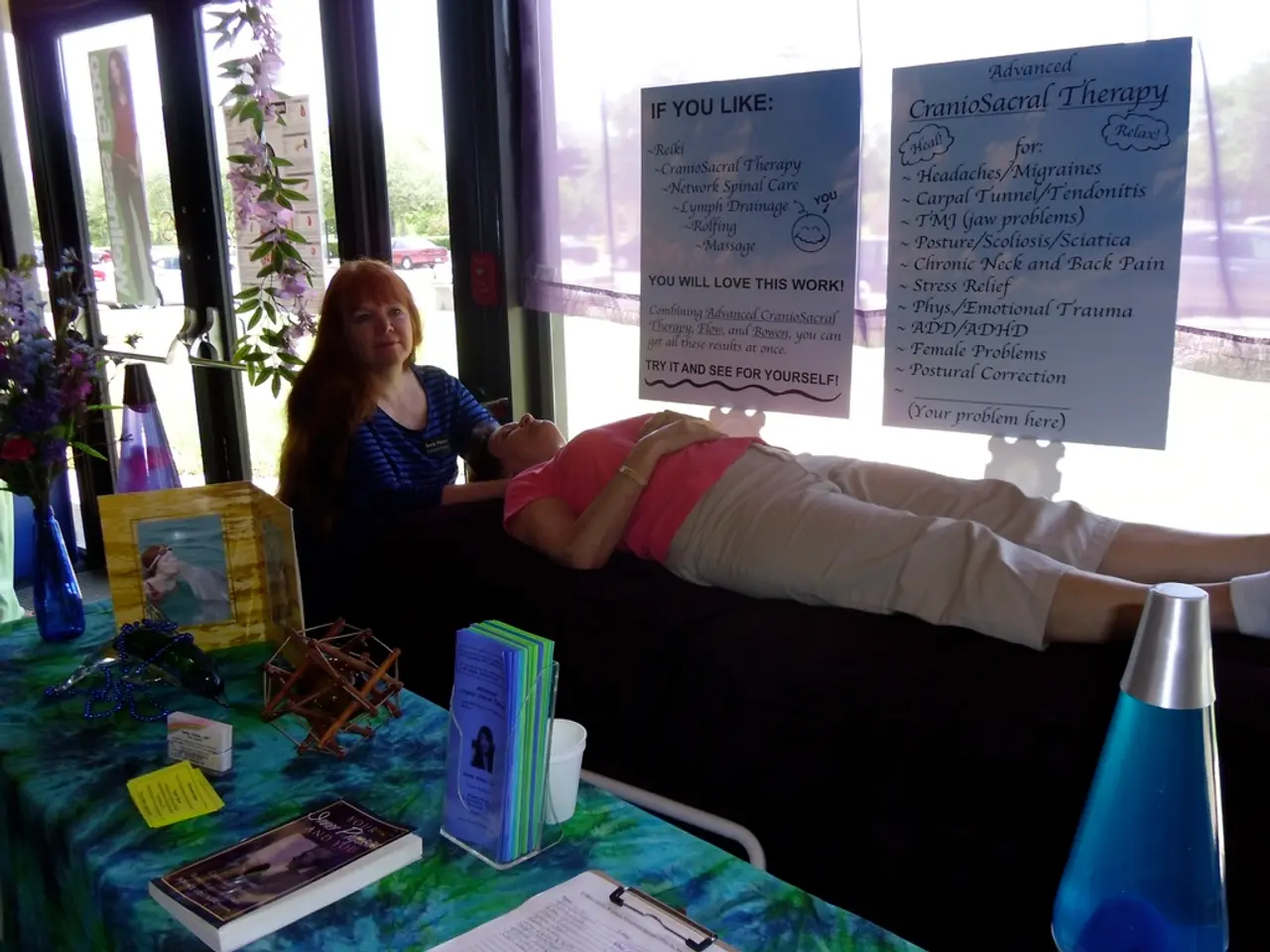Treatment for Spasticity: Objectives, Varieties, and Results
In the world of treating cerebral palsy, a common challenge is managing spasticity – excessive muscle stiffness and involuntary movements. A variety of treatment modalities are employed to help individuals with spasticity achieve their goals, which often include reducing muscle stiffness, improving voluntary movement and function, preventing deformities, enhancing mobility, increasing independence in daily activities, and ultimately improving quality of life.
Selective dorsal rhizotomy (SDR), a type of surgery that involves cutting out nerve roots along the spinal cord, is one method used to help limit muscle stiffness and pain in those with cerebral palsy. However, physical therapy, medications, Botox injections, and even surgical treatments are also crucial components of the treatment plan.
Physical therapy plays a foundational role in managing spasticity. It aims to improve muscle strength, flexibility, balance, posture, and mobility. Techniques such as stretching tight muscles, strengthening exercises, gait and balance training, and the use of assistive devices or orthoses (like braces and ankle-foot orthoses) are employed to maintain proper alignment and prevent contractures. Physical therapy also supports improved coordination and functional use of limbs.
Medications, such as muscle relaxants like oral baclofen, diazepam, or tizanidine, help reduce generalized spasticity and muscle stiffness. These drugs can target symptom relief, including pain and associated conditions like seizures. Anticholinergics may be used to manage other symptoms like drooling. In severe cases, intrathecal baclofen pumps can be implanted for continuous delivery of the medication.
Botox injections work by locally relaxing spastic muscles, reducing hypertonicity and allowing easier stretching and functional movement. When combined with physical therapy, Botox enhances the ability to improve range of motion, posture, and functional use, often used before considering surgery.
Surgical treatments are considered for fixed deformities or when conservative treatments are insufficient. Novel approaches involve "single-event multilevel surgeries" aiming to correct multiple spasticity-related deformities in one operation. Surgery can prevent or correct contractures, improve alignment and function, and increase independence. Surgical planning benefits from objective assessment tools to predict outcomes.
Additional modalities, such as whole-body vibration therapy and pulsed magnetic field therapy, have emerging evidence to reduce spasticity and enhance motor function, but require further study.
The combination of physical therapy, medications, Botox injections, and surgery is tailored to an individual’s specific deficits and goals, aiming for maximal functional improvement and quality of life enhancement. Regular monitoring and multidisciplinary care are essential to optimize outcomes.
Intrathecal medications, which involve surgically placing a pump in a person's abdomen to gradually release medication into the spinal fluid, most commonly baclofen, are another option for managing symptoms. A 2021 review found that SDR effectively improved motion and reduced spasticity and pain in the short term, but more research is necessary to clarify the long-term effects of SDR.
Potential side effects of medications for treating spasticity may include drowsiness, dizziness, weakness, confusion, and upset stomach. Intrathecal baclofen therapy, however, improves pain levels in most people, according to a 2019 review.
Most people tend to benefit from spasticity treatments, which may help improve movement, reduce pain levels, and decrease caregiver burden. However, there is currently insufficient evidence to determine which medications are most effective for treating spasticity.
In conclusion, a comprehensive approach, combining various treatment modalities, is essential to manage spasticity in individuals with cerebral palsy. The goal is to help them achieve their unique goals and improve their quality of life.
- Science and medicine have developed a wide range of therapies and treatments for managing disability and mobility issues associated with chronic diseases like cerebral palsy, including neurological disorders such as multiple sclerosis.
- These treatments often include fitness and exercise, health and wellness regimens, and nutrition plans to improve physical function, mental health, and overall quality of life.
- Examples of treatment modalities include selective dorsal rhizotomy, physical therapy, medications, Botox injections, and surgery, each with its specific aims and benefits.
- For instance, physical therapy focuses on improving muscle strength, flexibility, balance, posture, mobility, and functional use of limbs, while medications such as baclofen help reduce generalized spasticity and relieve pain.
- Surgical treatments, like single-event multilevel surgeries, are considered for fixed deformities or when conservative treatments are insufficient, aiming to prevent or correct contractures, improve alignment and function, and increase independence.







